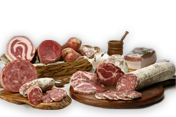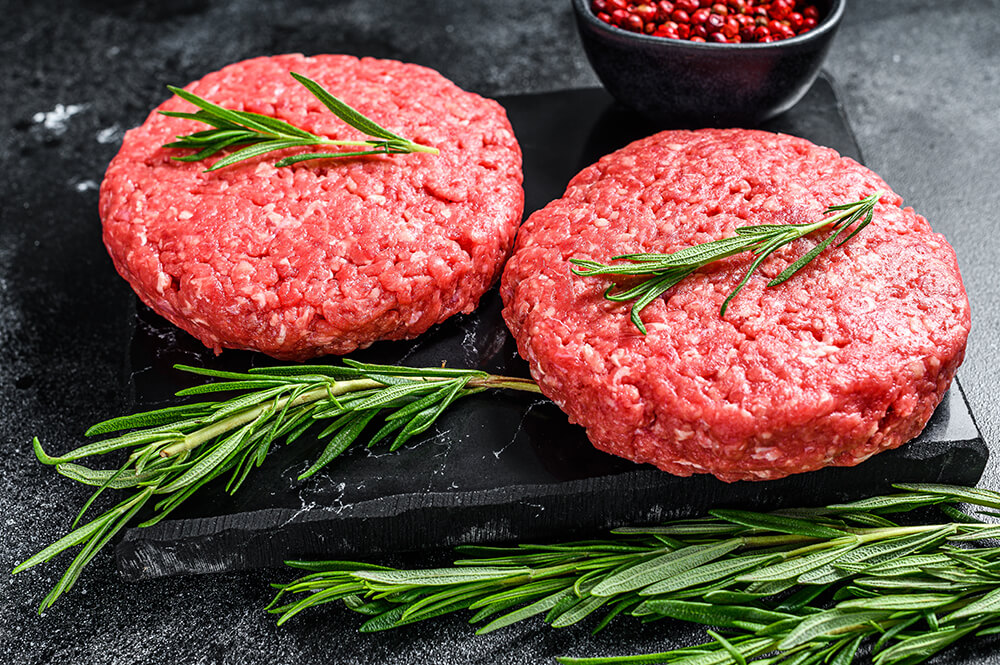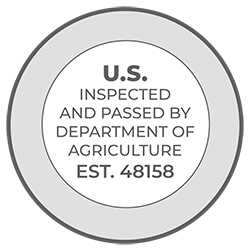The process of meat curing has been around for centuries. While it was primarily developed as a method of food preservation and to prevent disease, curing has taken on a different role in modern times. With the development of more modern food preservation methods, nowadays curing is mostly used for its culinary value to improve the texture and taste of our meat. Curing is the magic ingredient that allows us to create mouth-watering cured and prepared meats such as pork chorizo, delicious Volpi prosciutto, and irresistible pork pepperoni.
The History Of Curing
Curing is something of an ancient art form. Sumerians, an ancient people from the Mesopotamia region of the fertile crescent. As far back as 3000 BC, Sumerians used salt dried meat as a staple part of their diet to preserve the meat and help it last through times of scarcity.
While in modern times, we often take simple everyday refrigeration for granted, back in the old days, salt was the primary method used in food preservation. In around 900 BC, the Greeks began to mass-produce salt in ‘salt-gardens’ with the specific aim of meeting the demand for salt that was to be used for curing meat and fish. Fast-forward a few hundred years later and the Romans also adopted this method of food preservation and as time rolled on, meat curing became part of everyday life in different societies and cultures across the world.
By the early 1800s, the process of curing had developed significantly, evolving into more of an art than a science. And, 100 years later, from the early twentieth century to modern day, we have started to truly understand the role salt plays not just in the preservation of food but also in both the coloring and, most importantly, the flavor of our favorite dishes. Nowadays, curing has become even more of an art form than ever before.
Charcuterie: The Art Of Curing Meat
While in the modern culinary arts, ‘garde manger’ refers primarily to a chef who focuses on cold food production, the origins of the term are rooted in food preservation. ‘Garde manger’ is actually a French term that means “keeping/storing/protecting to eat”. This term was used to refer to food that was produced in the cold kitchen that included techniques for preparing and preserving food such as curing.
Charcuterie is one of the primary categories of garde manger. In a modern context, charcuterie is the art of creating sausages, such as pork polish sausage as well as other cured, smoked and preserved meats, using a variety of techniques that prevent food spoilage. This process typically involves preventing moisture and oxygen from affecting the meat and, therefore, salt, the world’s oldest preservative, has become the main tool of a charcuterie.
The processes and techniques involved in charcuterie (or salumiere in Italian) are deeply rooted in tradition with methods and techniques being developed and perfected over generations. Top restaurants who specialize in creating an experience with cured meats, hire their own Salumiere to cure their meat, so that they can bring in the expertise required to produce the very best results possible in texture and flavor for their customers.
The Meat Curing Process
During the curing process, it is common to add extra ingredients to both complement and contrast the effects of the salt. For example, different types of sugars, such as honey, maple syrup, and brown sugar can add a unique flavor and counterbalance the salt. Using herbs and spices such as bay leaves and black pepper is also common and another method used to impart a unique flavor on the meat.
Nowadays potassium nitrate and sodium nitrite are commonly used in the meat curing process. These chemical compounds bond to the myoglobin, acting as a replacement for oxygen which in turn helps to give the meat its pink or red coloring. The use of nitrites and nitrates in the curing process also help to slow the growth of bacteria, helping to preserve the meat.
Generally speaking, there are two primary methods of curing; wet curing and dry curing. In both instances, the flavor you get from the cure will be from the salt, in conjunction with any sugars, spices or herbs that are used.
Dry Curing
This is a process whereby a mixture of salts, sodium nitrate, sodium nitrate, sugars, and spices are rubbed onto the meat. The meat is then left for a period of time, dependent on the density of the cut and the desired taste and texture. The temperature, humidity levels, and length of time are the biggest factors that affect the outcome of the dry curing process.
Wet Curing
Wet curing is also known as brining and requires the meat to be submerged in a salty solution with nitrates and/or nitrites, along with other flavorings for a period of time or in a ‘sweet pickle’, in which sugars are added to the mix.
Brining can also mean that the meat is injected with a curing solution which may include liquid smoke to add a smoky flavor to the meat. Injecting is carried out as the meat passes through a machine with scores of needles that pierce the meat, injecting it with a specific amount of curing solution. While injecting is generally carried out in a commercial setting, it can also be done at home, but it is difficult to get the right balance of salt and cure into the meat.
While many chefs would argue that dry curing is the easier of the two methods, the flavors are generally not as bold. With wet curing, it is easier to control the level of humidity that the meat is exposed to. Wet meat curing typically works best for smaller cuts of meat. A larger ham, for example, might need to be submerged for up to six weeks.
Smoking
Smoking is a process that relies on indirect heat, low temperatures and long cooking times. The meat is exposed to smoke from smoldering wood, plant or other organic material and the result is a beautifully tender, uniquely flavored cut of meat, like our smoked pork spiral ham or our smoked pork ham hock. Traditionally smoking, like curing, was used to preserve food as the smoke would protect the meat and prevent the development of bacteria. However, just like curing, smoking is used in modern cooking as a way to enhance the flavor of the cured meat and add a unique taste to the meat.
Reaping The Rewards Of Curing Meat
Although curing has been around for centuries, there is a huge amount to learn and to understand in what has now become a very specialized culinary art. Taking the time to understand the curing process, has allowed us to create the very best cuts of cured and smoked meat for our clients in the Chicago area. With our knowledge, expertise and years of dedication to our craft, we offer a range of mouthwatering sausages and two fantastic smoked pork products; our Pork Applewood Smoked Bacon and Pork Cherrywood Smoked Bacon. To learn more about our range of wholesale meats, get in touch with our team today and let us help you to choose the right cut of meat for your next culinary creation.























